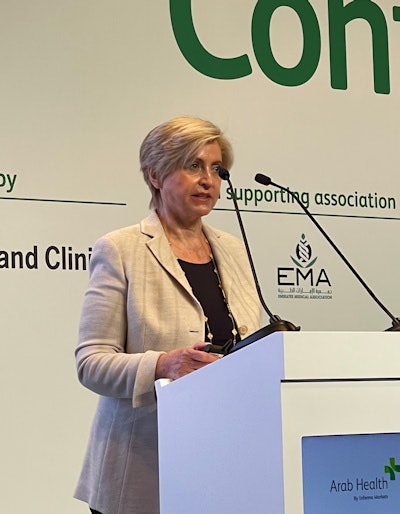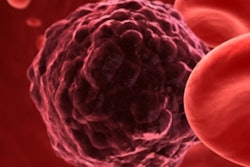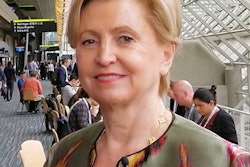
Radiology can play a major role in developing the field of precision oncology in coming years by advancing integrative diagnostics, according to a January 25 presentation by Dr. Hedvig Hricak, PhD, at Arab Health 2022 in Dubai, United Arab Emirates.
 Dr. Hedvig Hricak, PhD. Image courtesy of Robert Stevens.
Dr. Hedvig Hricak, PhD. Image courtesy of Robert Stevens.The key to new breakthroughs will be embracing a team approach to precision oncology, she noted.
"Engineering and computer scientists are becoming absolutely essential to our teams," Hricak said.
Hricak is chair of radiology at Memorial-Sloan Kettering Cancer Center (MSKCC) in New York City, a position she has held since 1999, and a member of the National Academy of Medicine. She presented the Sir Godfrey Hounsfield lecture at the Total Radiology Conference section of Arab Health 2022 and discussed the road ahead for molecular imaging for personalized cancer care.
Integrated diagnostics can be defined as the convergence of imaging, pathology, and genomics with the goal of improving outcomes for cancer patients. For radiology's part, the challenges are tremendous, according to Hricak.
"Number one, even today, in most departments, we don't have structured reporting. We don't have a culture of sharing, and collaboration," Hricak said.
Structured reporting was implemented at MSKCC in 2009, and although it was not easy, it has been a great success, she said. Today, when someone says "consistent with," he or she means greater than 90%; when they say "possible" or "probable," it's a 50/50, and when they say "unlikely," it means less than 10%, she said.
Compliance with the lexicon is sought after in every single report, and MSKCC's radiology department is busy, with 180 radiologists on staff, Hricak added. But it works. It improves radiologists' ability to communicate with each other, to communicate with referring physicians, and to communicate with patients.
"We need to speak the same language," she added.
Second, the use of artificial intelligence (AI) for data generation and extraction needs to be embraced because it will play a key role in integrated diagnostics, given that the volume of diagnostic clinical data is growing exponentially, Hricak said.
AI can provide standardization and provide consistent interpretation. For instance, there are tools available for tumor segmentation, particularly in brain imaging, but the ultimate goal is an automated tumor segmentation tool that can be used for every site in the body, she said.
To date, there is no such algorithm. Companies are saying they have the clinical data, but they don't, Hricak said. Determining every lesion volume and total tumor burden is a huge challenge and gathering the data for presentation on dashboards requires a time commitment most institutions simply cannot afford.
There are a number of commercial entities investing heavily in the area, but clinical expertise is not always present in the process. And these are not the companies well known to radiology like GE Healthcare or Siemens Healthineers, but the Amazons and Googles of the world, she said.
Radiologists need to stay ahead of the curve and guide each and every step in the process, she said.
"We need to solve it, otherwise somebody else will do it for us," she said.
At MSKCC, researchers began applying integrated diagnostics first in neuroendocrine tumors and glioblastomas, and plan to shift soon to include breast cancer, Hricak said. Most studies are small pilot studies at this point, given that it takes a small army to prepare the clinical data. In fact, Hricak said they are collaborating with radiologists in India for data extraction and transcription for studies because they simply don't have the people to do it.
"It's very difficult to stimulate people by data extraction and translation of all of the data into computer-readable data," she said.
Ultimately, precision oncology in 2021 and beyond is a team science, and although it is a new field, it is important to remember that examples have been in practice for some time, such as multidisciplinary tumor boards, Hricak said.
"Tumor board is a manual intellectual integrated diagnostics," she said.



















